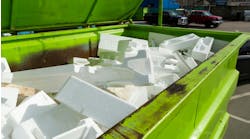How to Achieve Long-Term 3D-Printed Resin Performance and Stability
The manufacturing world enjoys many benefits from additive manufacturing. These include faster development cycles for a shorter time-to-market, reduced product costs and lead times, greater design flexibility, and countless opportunities for lighter, more robust products. There is also a wide variety of 3D printing technologies and materials to choose from, with more seemingly coming online each day.
Stereolithography and Projection-Based 3D Printing
One of the most capable and well-known 3D printing technologies is stereolithography (SLA), pioneered by 3D Systems’ founder Chuck Hull more than 30 years ago.
Together with its newer counterpart, the high-speed, projection-based Figure 4 platform, these similar yet distinct additive manufacturing processes are an excellent solution for anyone who needs highly accurate 3D-printed parts in a range of advanced polymers. Both technologies use ultraviolet (UV) light to cure sequential layers of photoreactive resin, a process known as vat polymerization. As the term implies, these epoxy, acrylic or methacrylic monomer-based resins polymerize and harden when exposed to certain wavelengths of light. But where SLA uses a UV laser to draw each layer directly on the resin surface, Figure 4 employs a digital light source to project a series of images onto the photopolymer, curing each layer in an instant. This allows for print speeds in excess of 50 millimeters (2 inches) an hour.
We’ll discuss the merits and applications of each technology later in this paper, but first, it’s important to know that SLA is considered by many to be the undisputed champion of high-accuracy prototyping, large-format printing, and tooling applications. Figure 4, on the other hand, is generally the favorite for scalable, higher-volume production of end-use polymer components.


